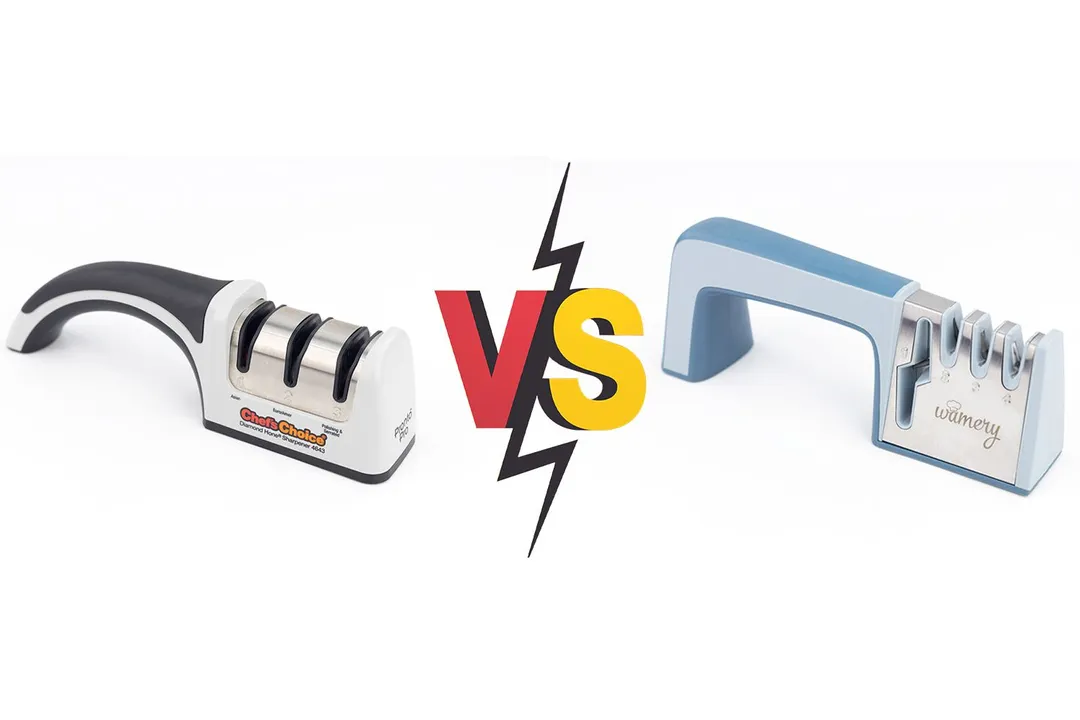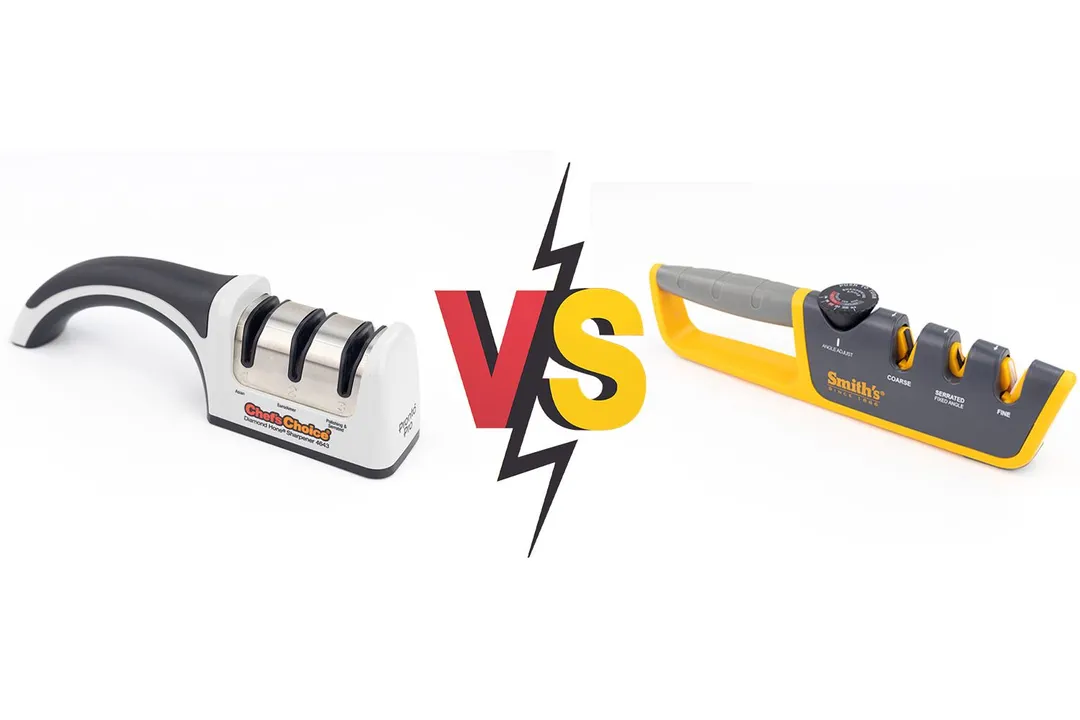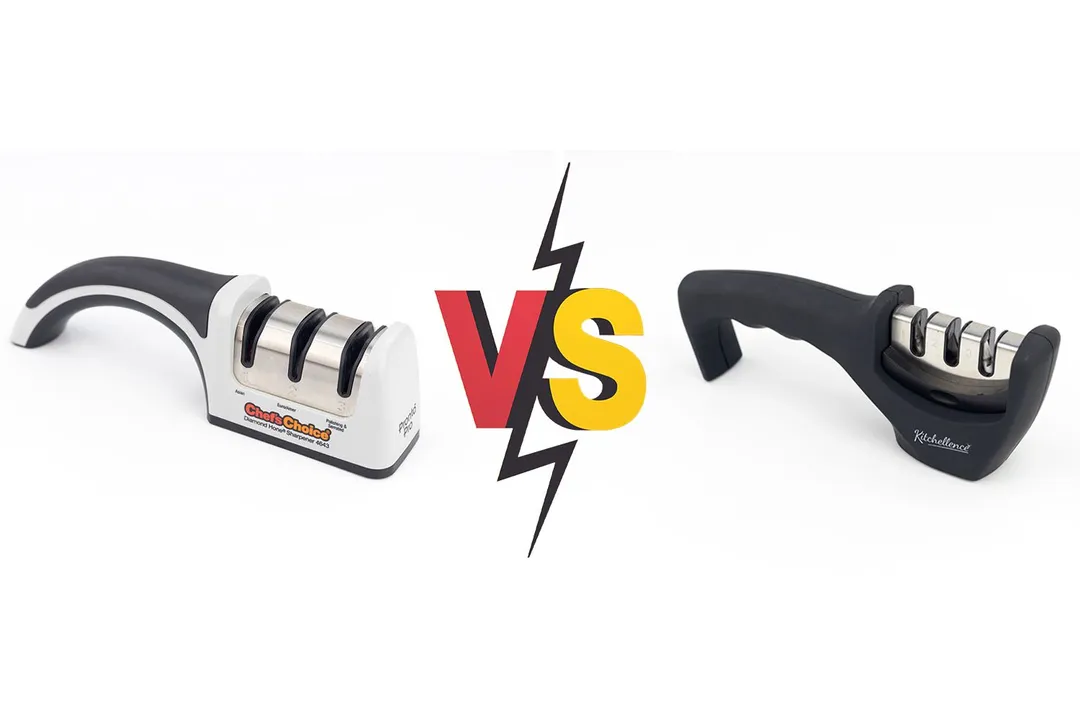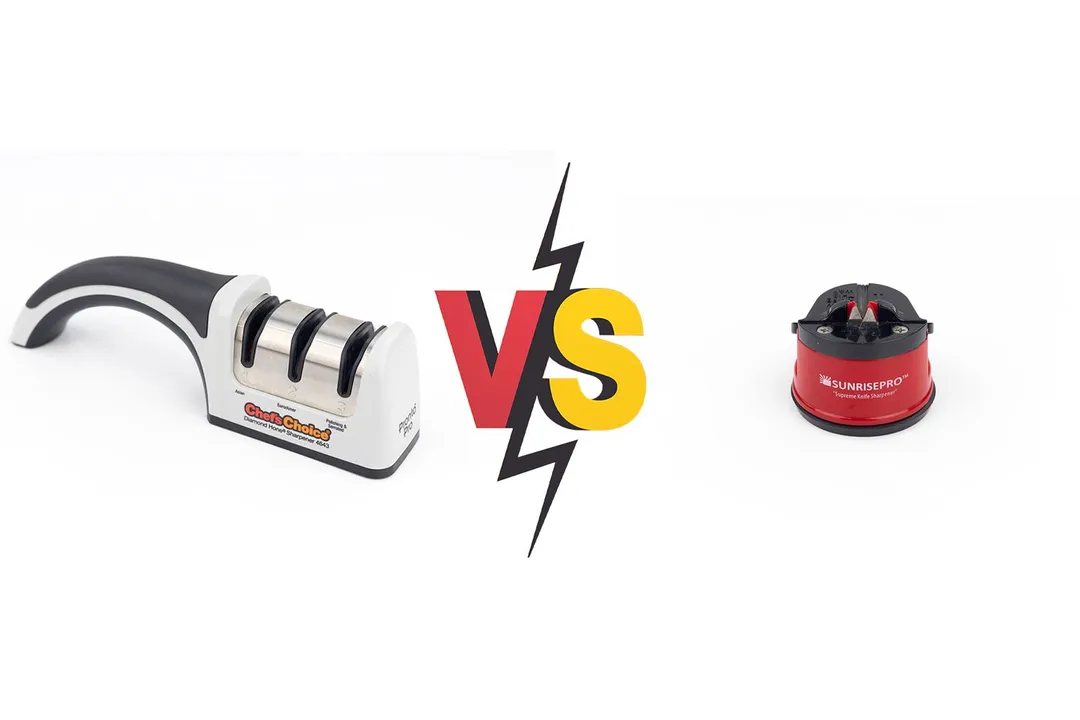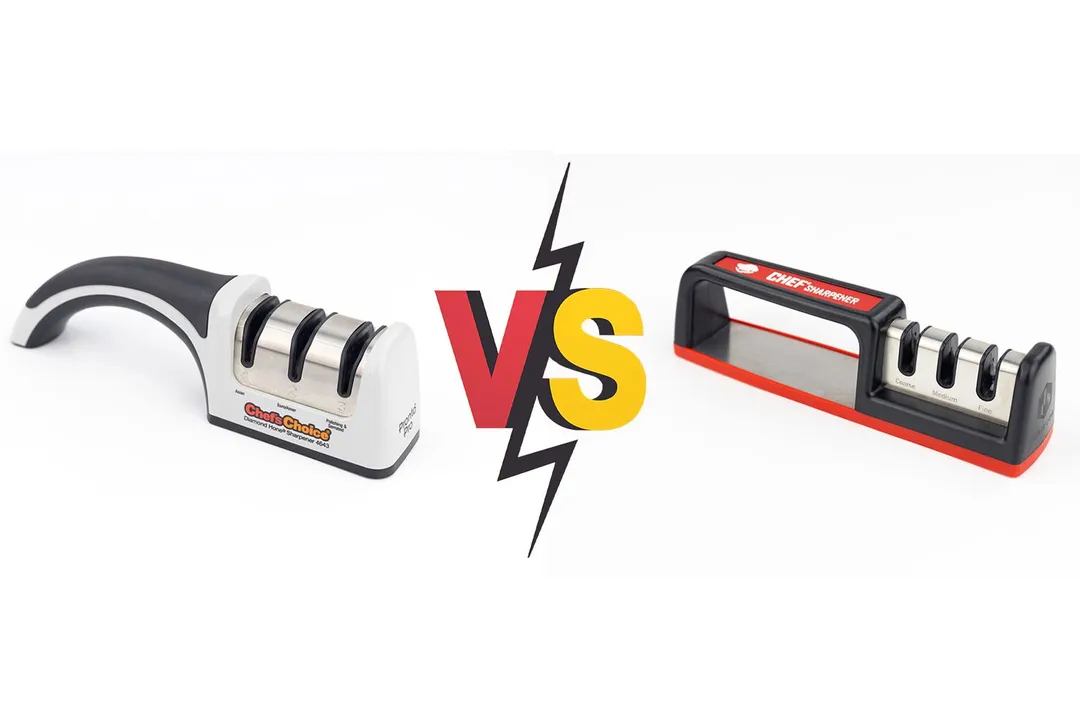Our recommendations are made independently through Research & Testing. We may receive commissions from purchases made via our links.
Amesser A-65 vs. Chef's Choice 4643 Manual Knife Sharpener Side-by-Side Comparison
The Amesser A-65 vs. Chef's Choice 4643 manual knife sharpener in our tests. See how they compared in speed, sharpness, and edge smoothness.
Amesser A-65
Tested Using Methodology v1.1Chef's Choice 4643
Tested Using Methodology v1.1
Overall Verdict
The Amesser A-65 sharpener isn’t the sharpest tool in the drawer, nor does it create one. However, it still offered a better performance than the Chef's Choice 4643 in our tests.
Both devices have a sturdy construction with a great fit and finish. The Amesser gained good ratings for its substantial weight and soft, velvety cover texture, while the Chef’s Choice 4643 sports our favorite simplistic but highly stable base design.
When it came time to actually sharpen a knife, the former got the job done more quickly and effectively. We also achieved a straighter knife’s edge. The latter, despite its elaborate wheels, took twice the time in our speed test and couldn’t achieve the same performance level.
In the end, the Amesser A-65 is the more capable and the better choice between the two sharpeners.
Pros & Cons
- Affordable
- Instinctive and easy to use
- Well-built with a solid design
- Grippy and comfortable handle
- Safety glove included
- Works with 20° and 15° edges
- Compatible with serrated blades
- Grippy handle
- Neat, ergonomic overall design
- Tapered base
- High center of gravity
- Expensive price
- Awkward slot layout
Key Specs
Where to Buy
*You help support HealthyKitchen101's product testing and reviews by purchasing from our retail partners.
Analysis and Test Results
Performance
Sharpening Time to Cut a Lemon
Material Retention



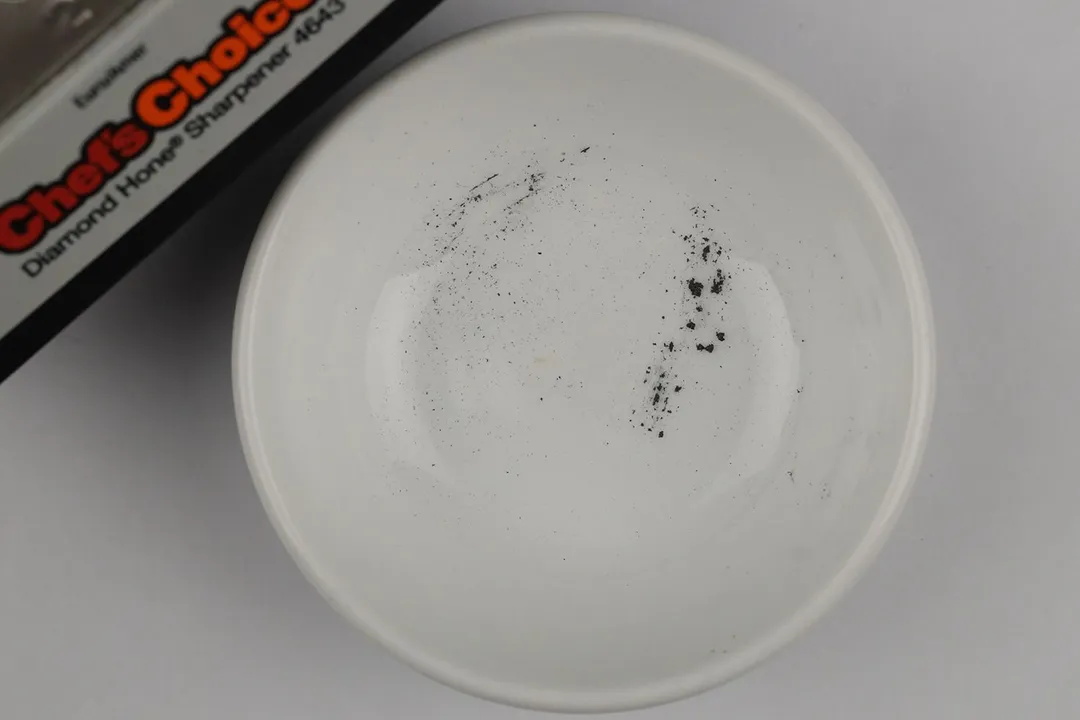
Maximum Sharpness Achieved
Edge Smoothness

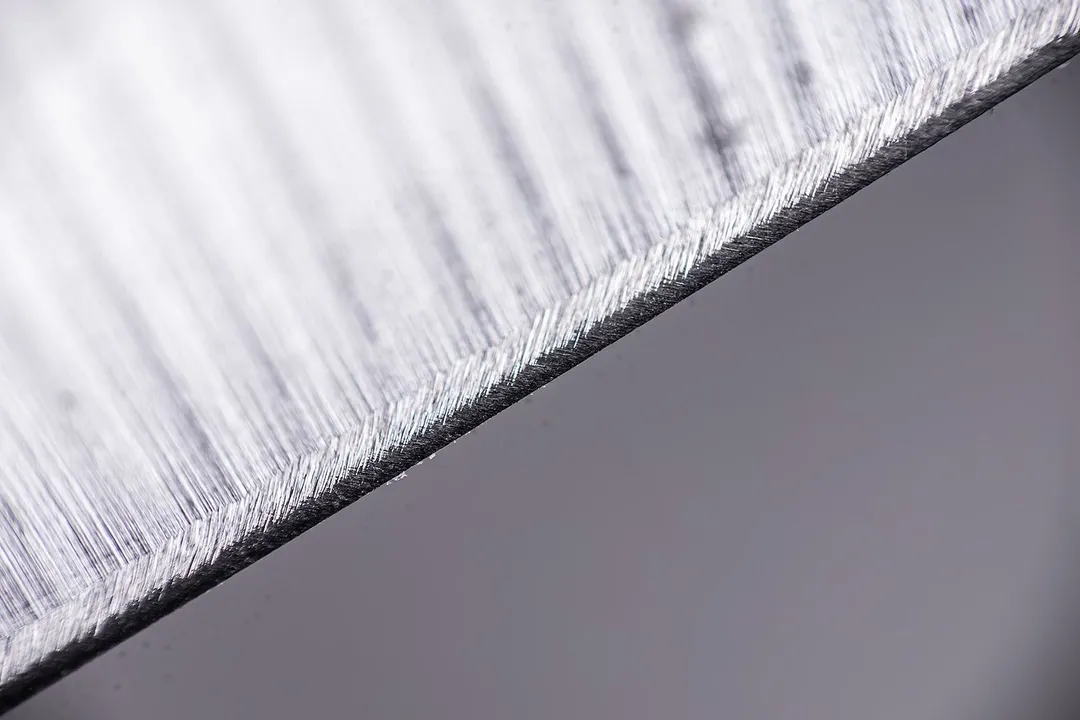
Design
In the Box

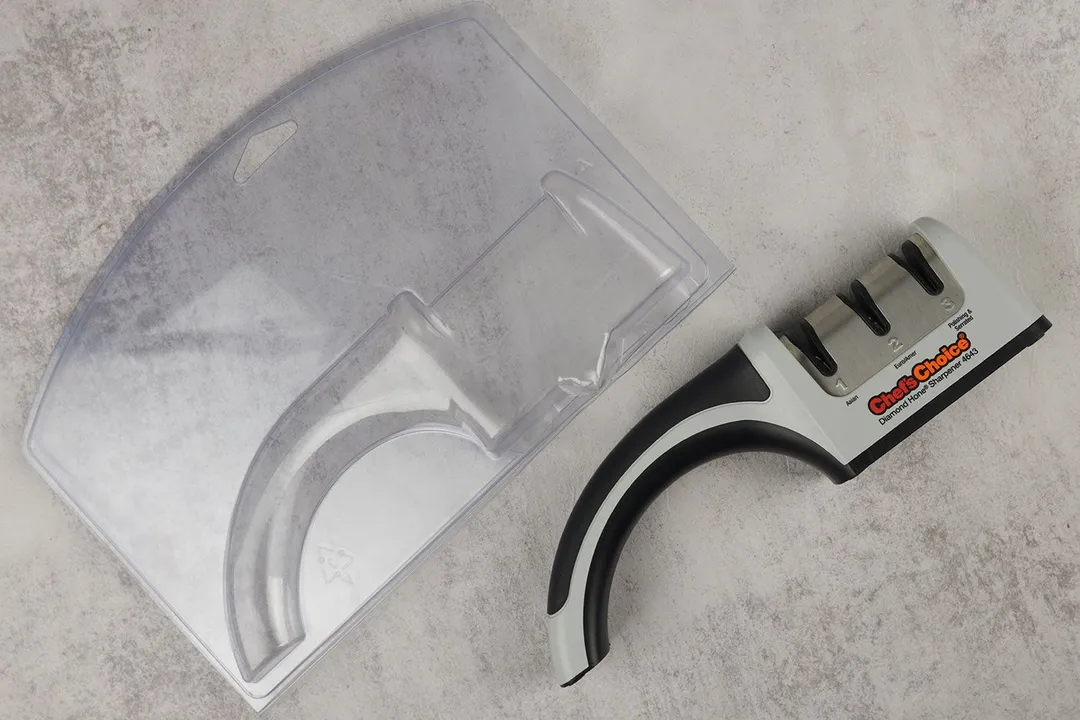
Dimensions
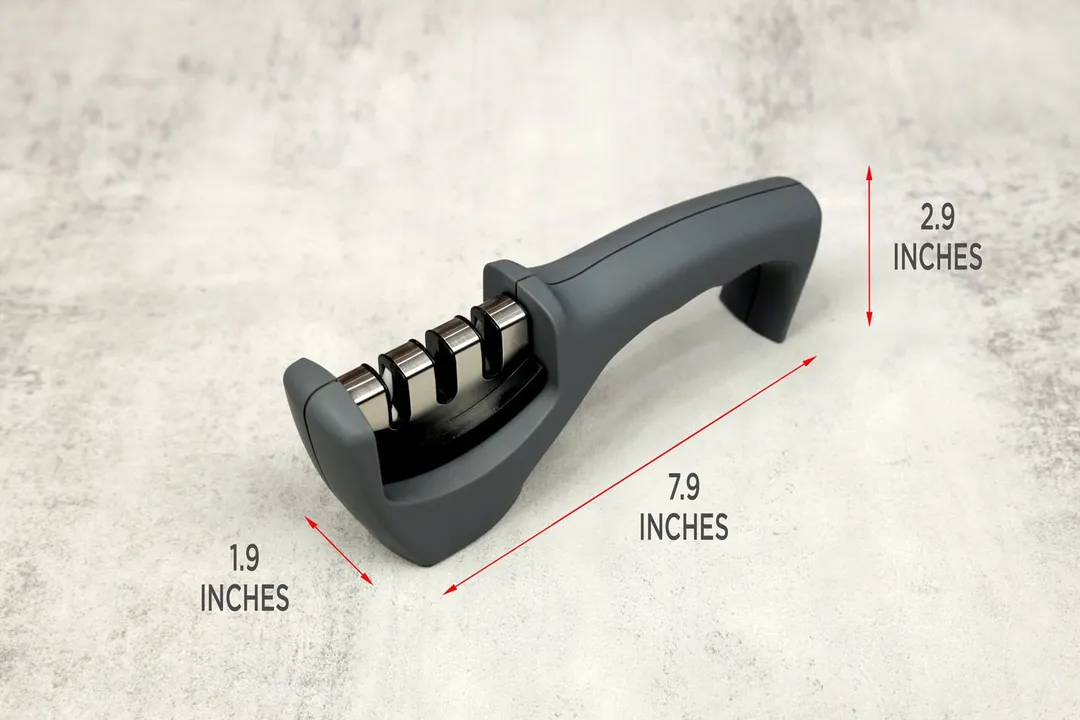
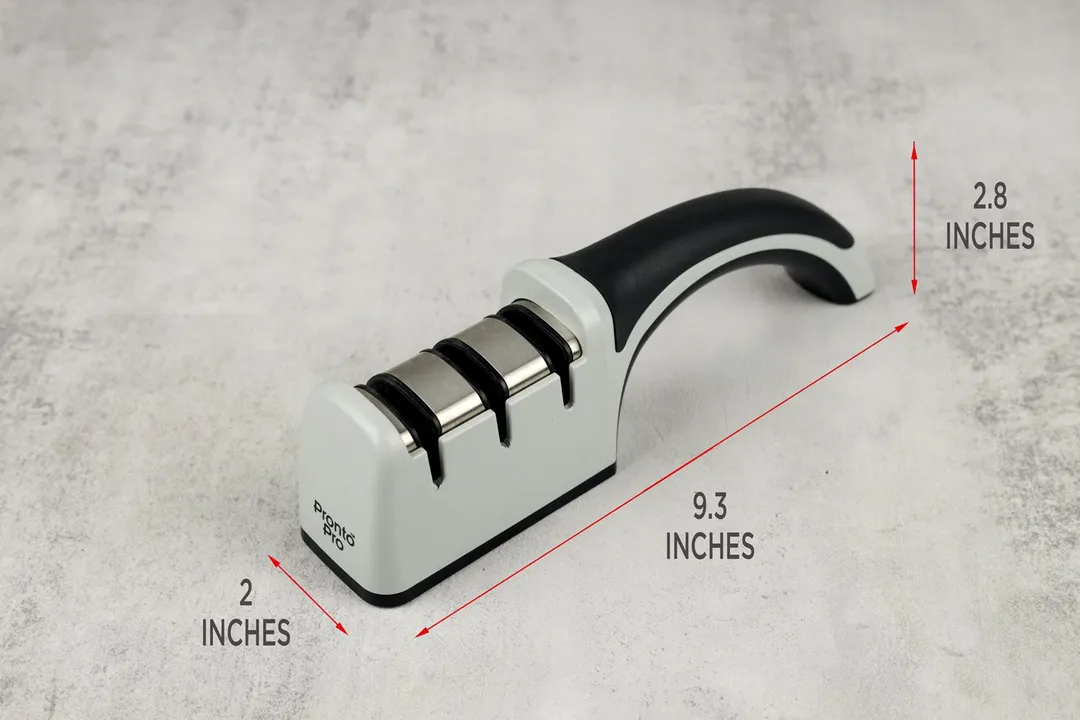
Build Quality
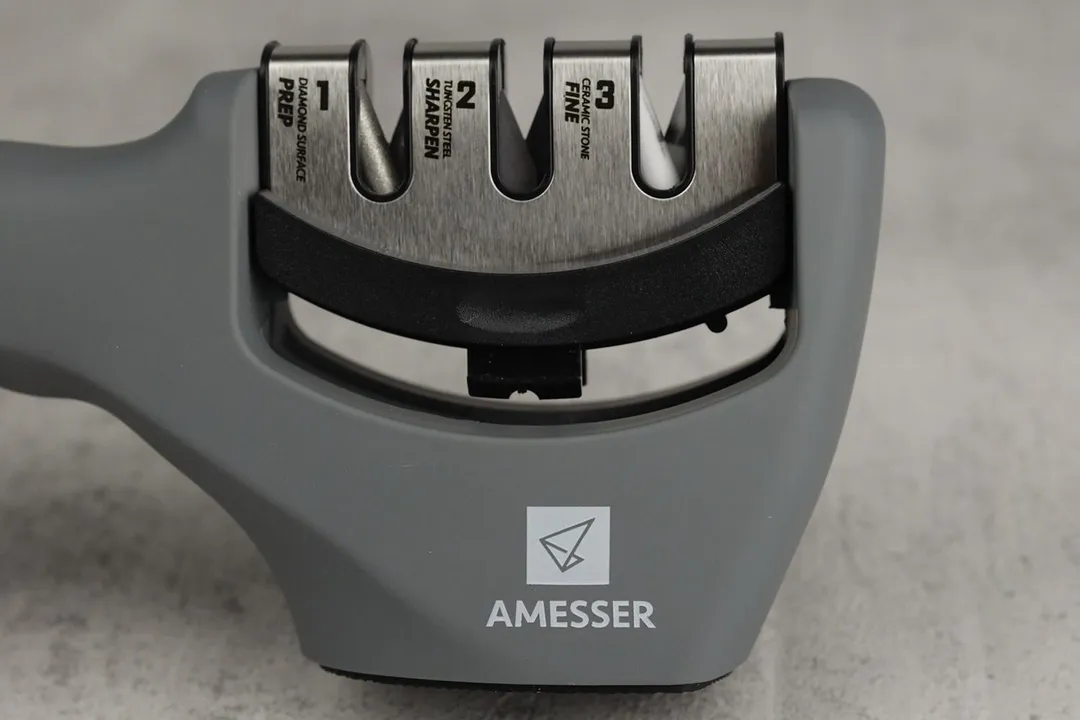
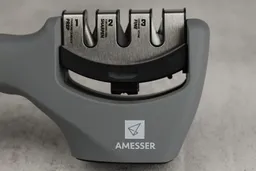
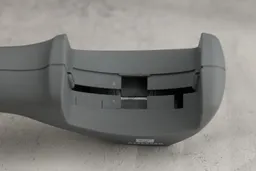
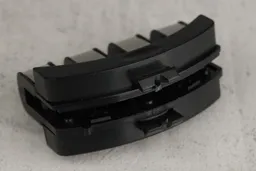
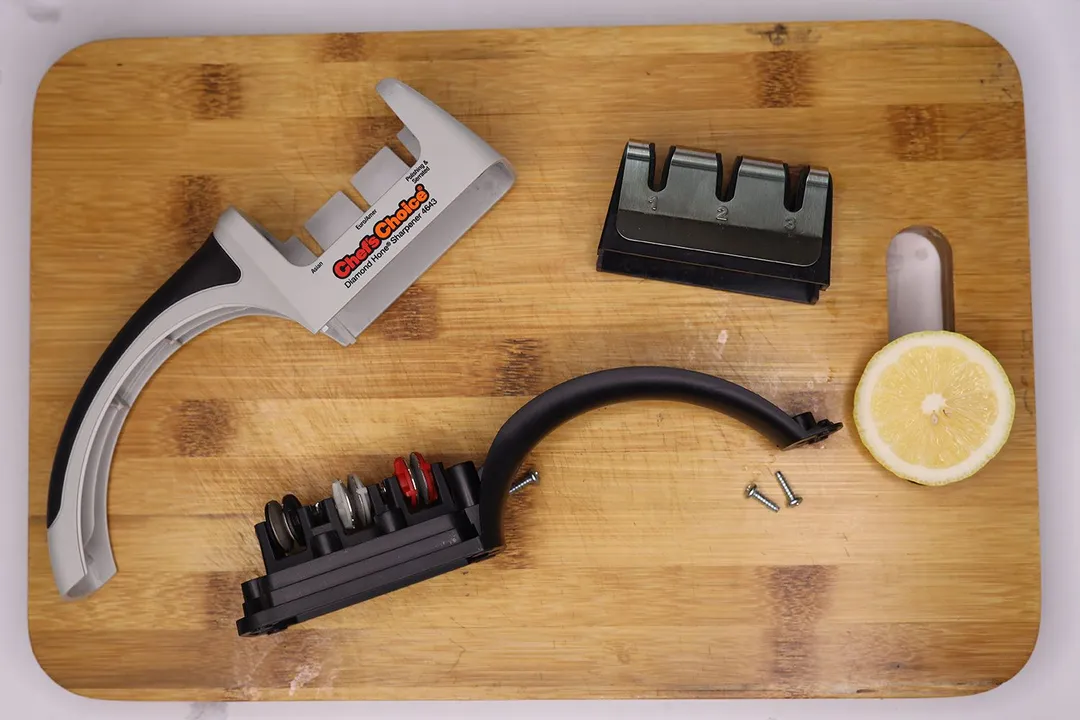
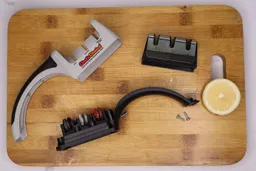
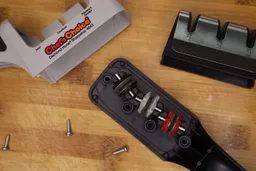
Working Section
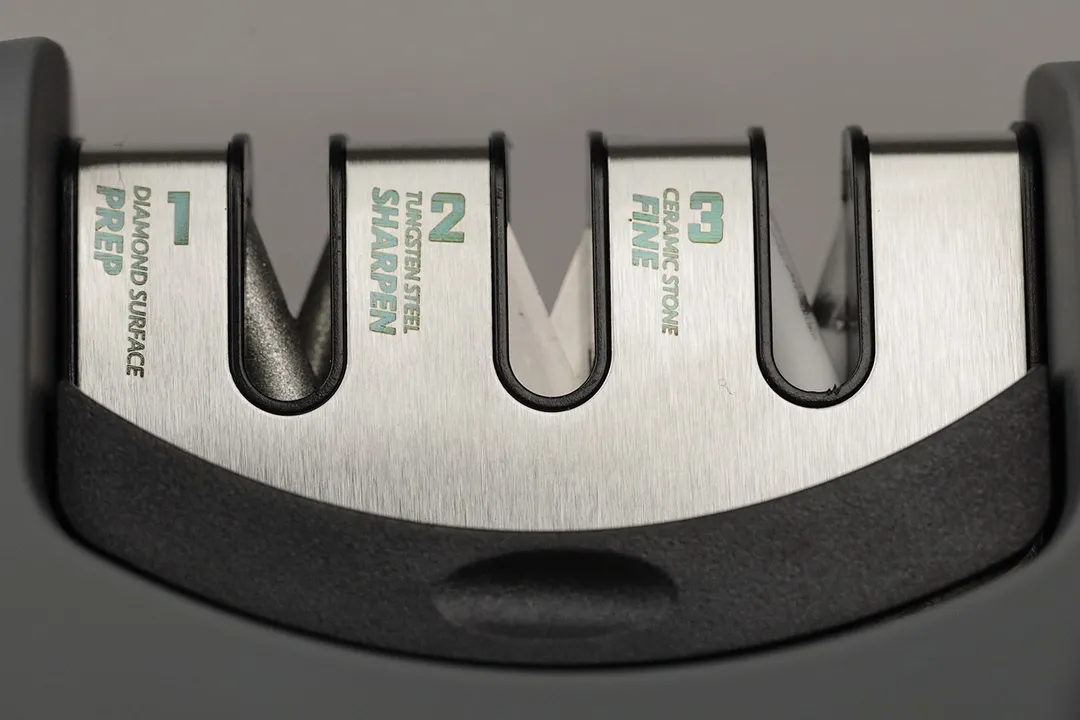
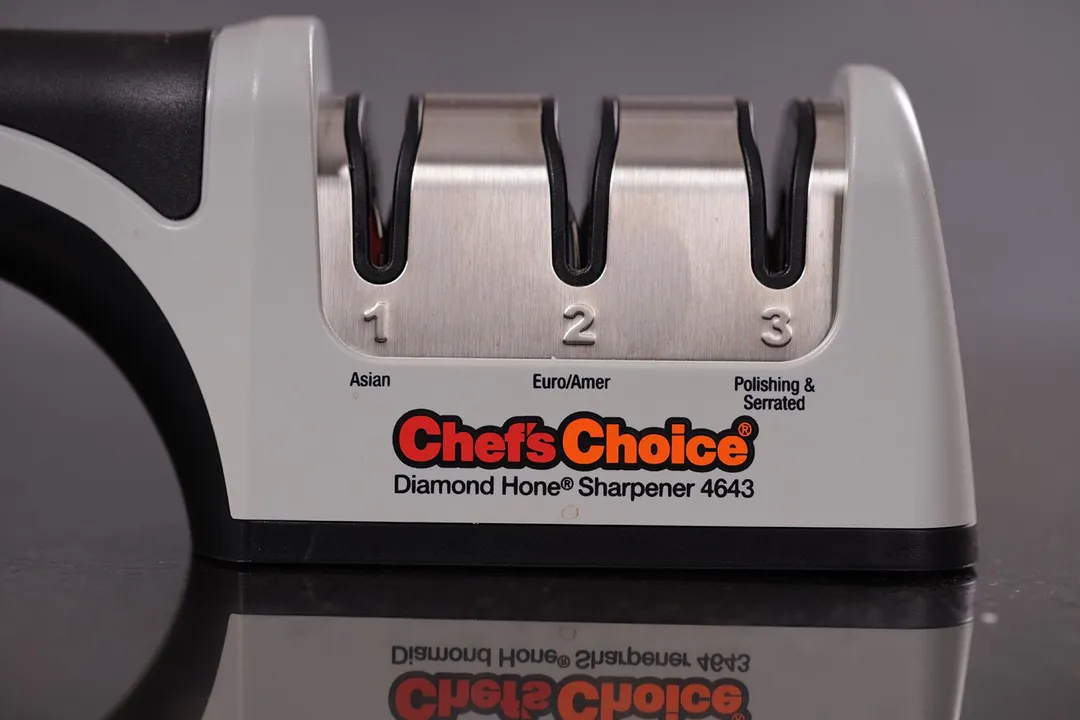
Base
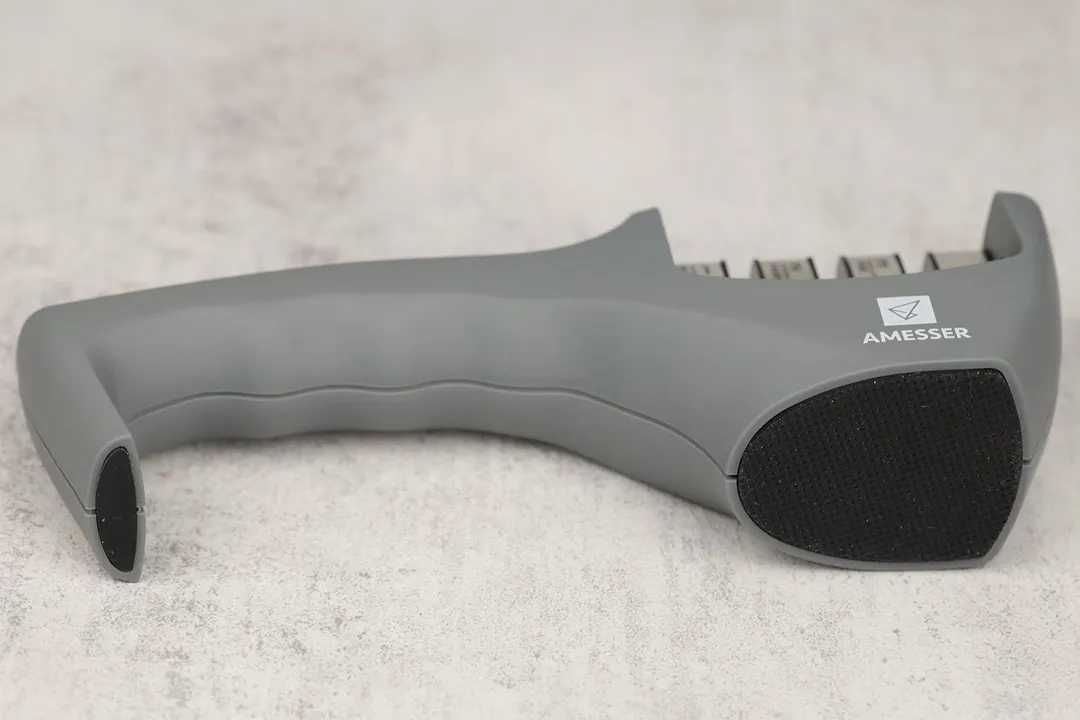
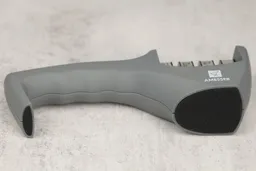

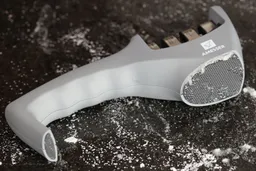

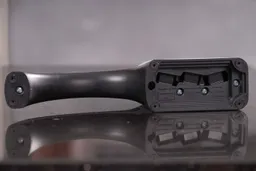
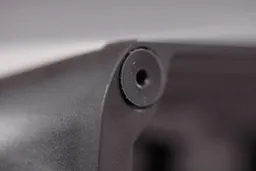
Grip

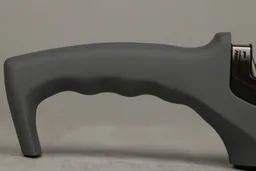


Usability
Slot Arrangement
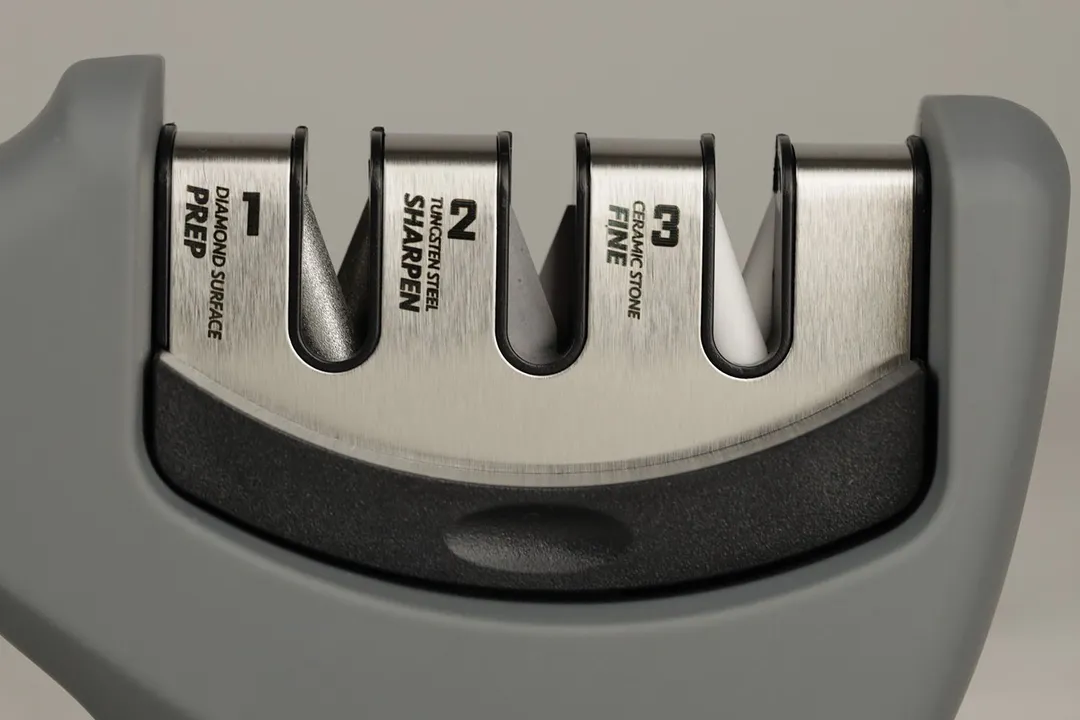
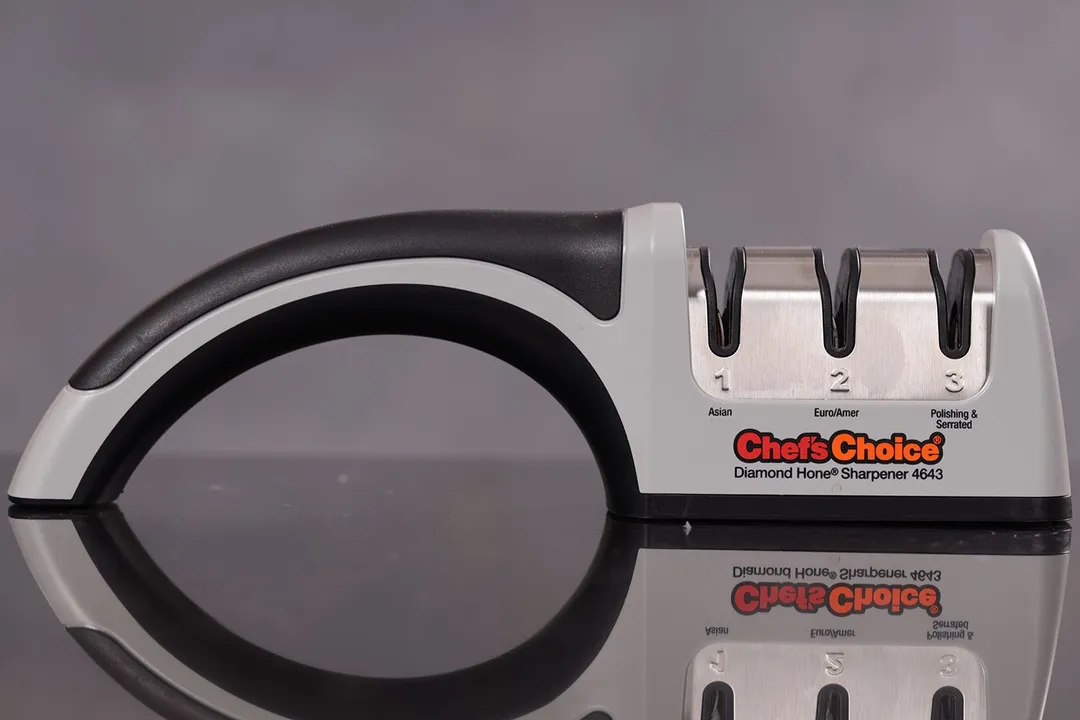
Insertion
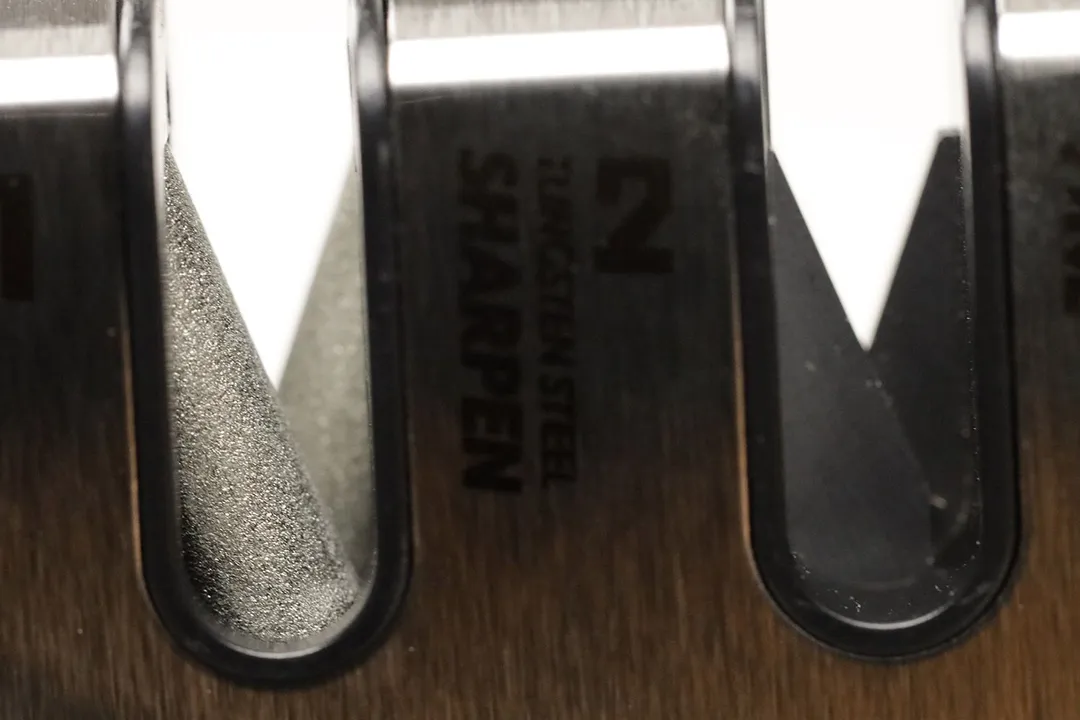
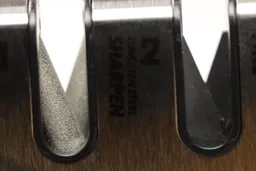
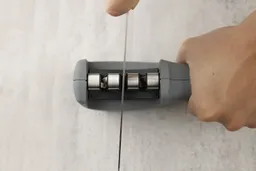

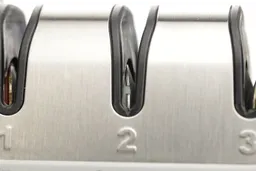
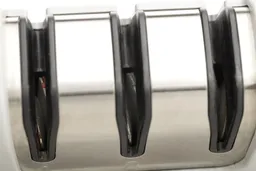
Pulling Through
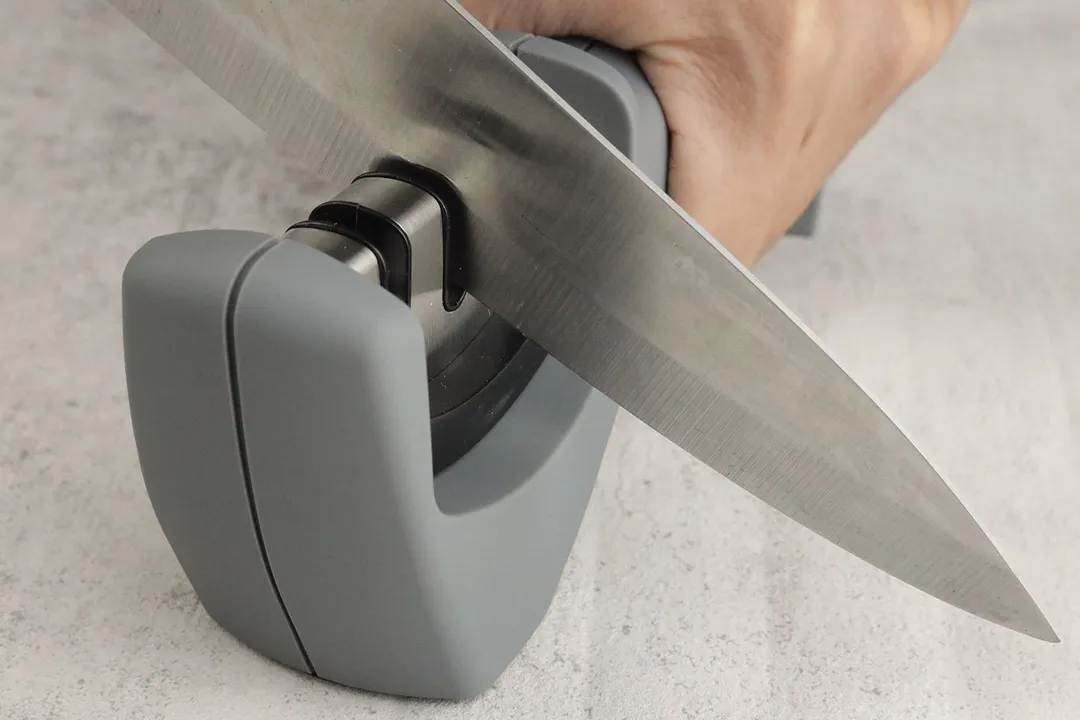
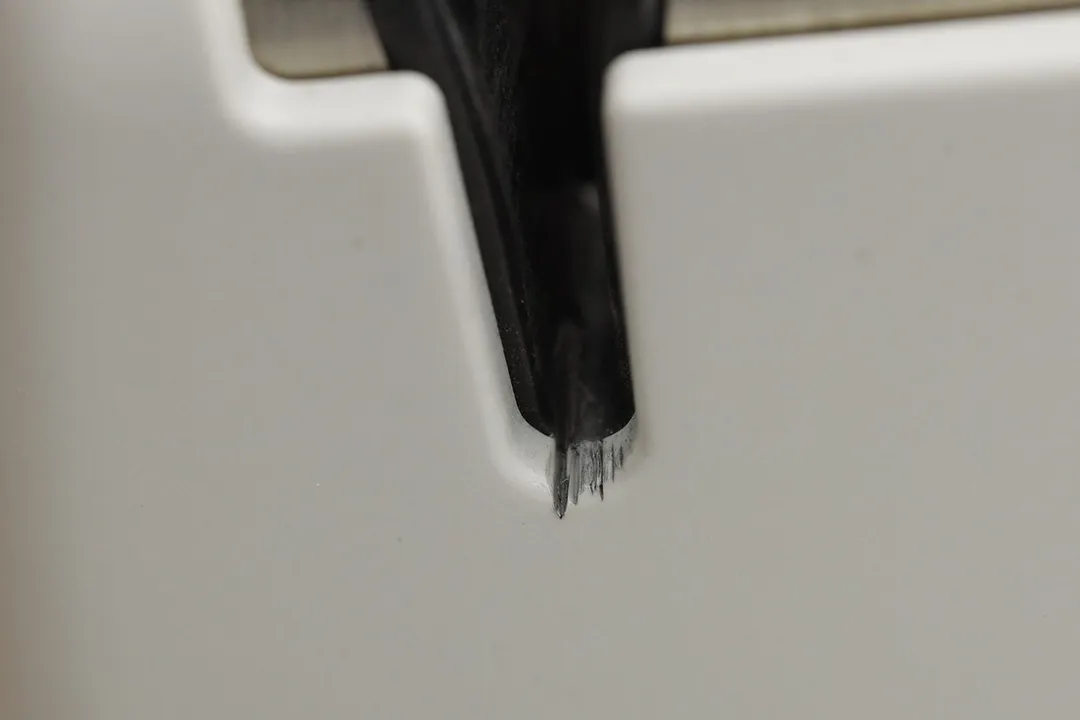
Stability on a Clean Surface
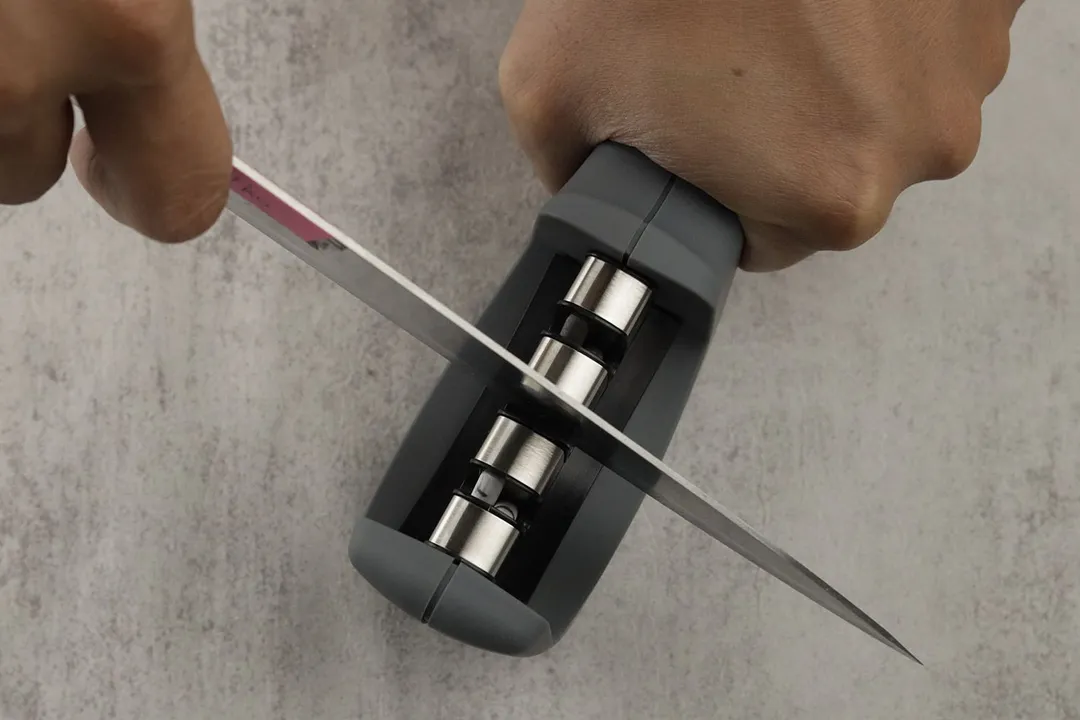
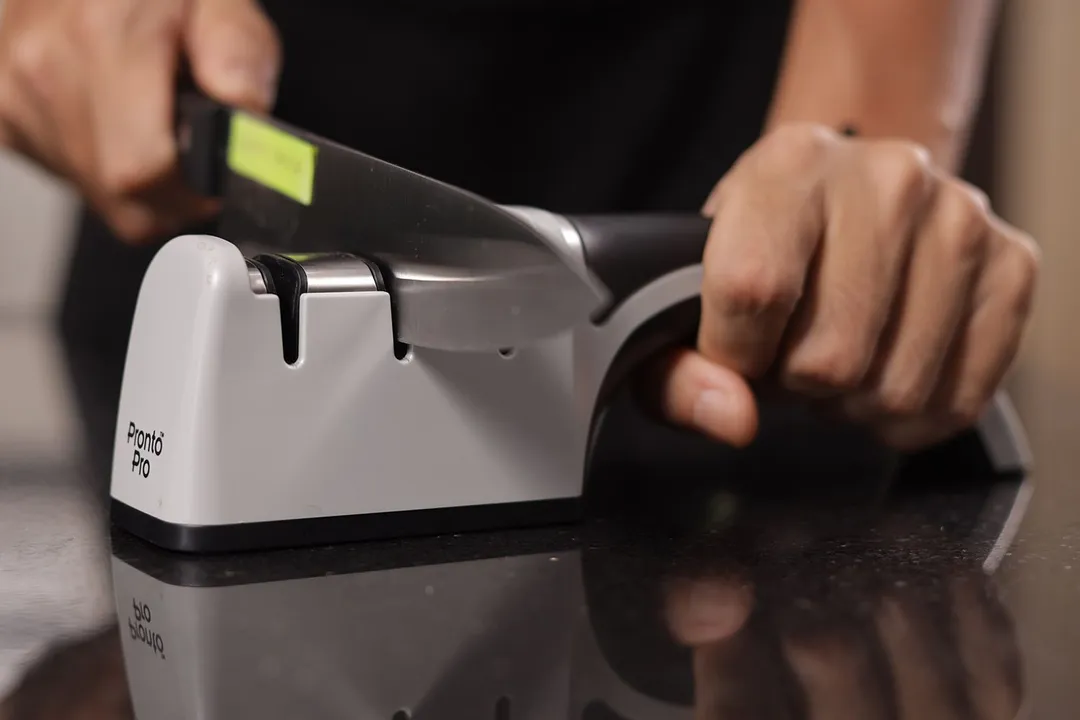
Stability on a Wet and Dirty Surface

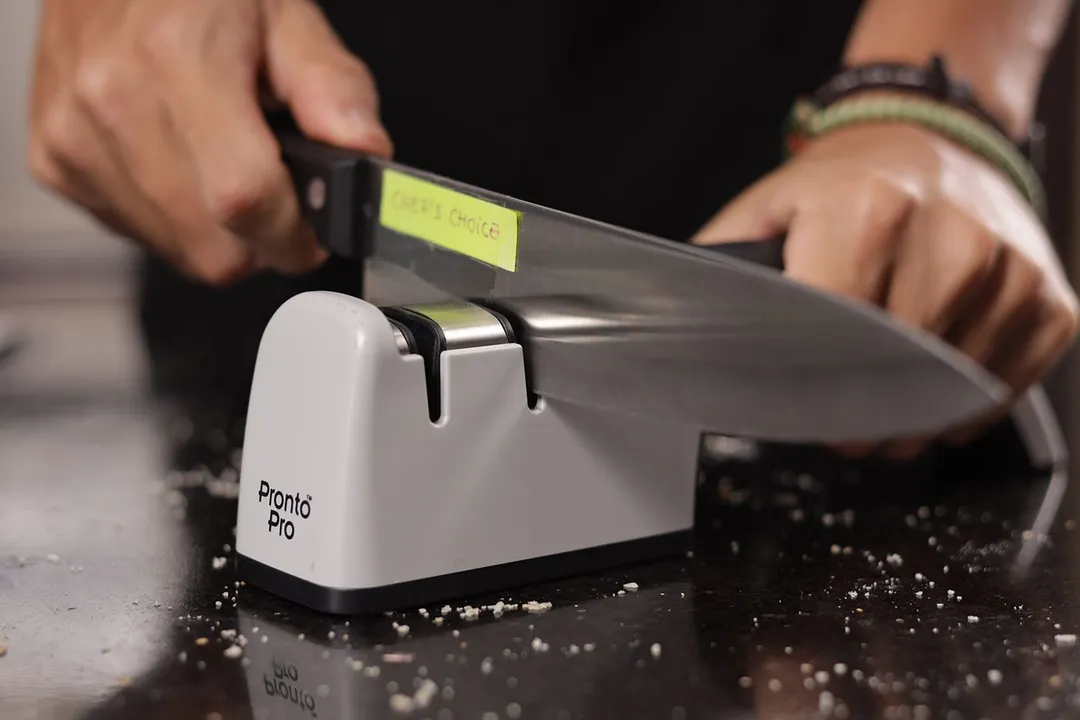
Behind the Comparison
Anh Ngo is a writer with 9 years experience at different media outlets, covering from public news and events to product testing and analysis. At HealthyKitchen101, she works across different departments, communicating closely with its network of writers, editors, and health, tech, and search engine experts to provide a meaningful and pleasant reading experience for visitors.
Lap is Head of the Research, Testing, and Review Team (RTR Team) at HealthyKitchen101.com, where he directs and supervises the testing of kitchen gadgets and appliances.
Nguyen Ntk is a graphic designer, photographer, and videographer whose philosophy centers around respecting and celebrating the beauty of reality. Through his lenses, Nguyen strives to capture the true essence of objects and events, showcasing and highlighting authentic features without distortion or exaggeration.



